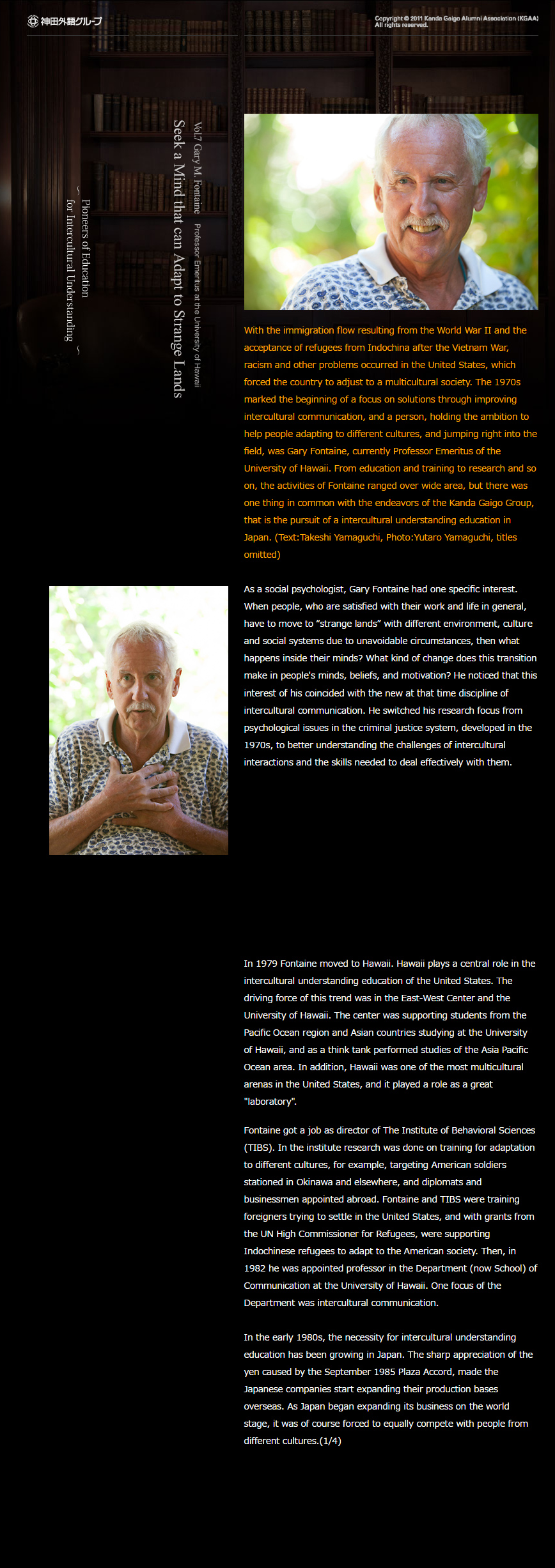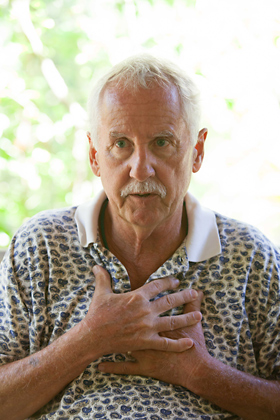

Copyright © 2011 Kanda Gaigo Alumni Association(KGAA). All rights reserved.

With the immigration flow resulting from the World War II and the acceptance of refugees from Indochina after the Vietnam War, racism and other problems occurred in the United States, which forced the country to adjust to a multicultural society. The 1970s marked the beginning of a focus on solutions through improving intercultural communication, and a person, holding the ambition to help people adapting to different cultures, and jumping right into the field, was Gary Fontaine, currently Professor Emeritus of the University of Hawaii. From education and training to research and so on, the activities of Fontaine ranged over wide area, but there was one thing in common with the endeavors of the Kanda Gaigo Group, that is the pursuit of a intercultural understanding education in Japan. (Text:Takeshi Yamaguchi, Photo:Yutaro Yamaguchi, titles omitted)

As a social psychologist, Gary Fontaine had one specific interest. When people, who are satisfied with their work and life in general, have to move to “strange lands” with different environment, culture and social systems due to unavoidable circumstances, then what happens inside their minds? What kind of change does this transition make in people's minds, beliefs, and motivation? He noticed that this interest of his coincided with the new at that time discipline of intercultural communication. He switched his research focus from psychological issues in the criminal justice system, developed in the 1970s, to better understanding the challenges of intercultural interactions and the skills needed to deal effectively with them.
In 1979 Fontaine moved to Hawaii. Hawaii plays a central role in the intercultural understanding education of the United States. The driving force of this trend was in the East-West Center and the University of Hawaii. The center was supporting students from the Pacific Ocean region and Asian countries studying at the University of Hawaii, and as a think tank performed studies of the Asia Pacific Ocean area. In addition, Hawaii was one of the most multicultural arenas in the United States, and it played a role as a great "laboratory".
Fontaine got a job as director of The Institute of Behavioral Sciences (TIBS). In the institute research was done on training for adaptation to different cultures, for example, targeting American soldiers stationed in Okinawa and elsewhere, and diplomats and businessmen appointed abroad. Fontaine and TIBS were training foreigners trying to settle in the United States, and with grants from the UN High Commissioner for Refugees, were supporting Indochinese refugees to adapt to the American society. Then, in 1982 he was appointed professor in the Department (now School) of Communication at the University of Hawaii. One focus of the Department was intercultural communication.
In the early 1980s, the necessity for intercultural understanding education has been growing in Japan. The sharp appreciation of the yen caused by the September 1985 Plaza Accord, made the Japanese companies start expanding their production bases overseas. As Japan began expanding its business on the world stage, it was of course forced to equally compete with people from different cultures.(1/4)